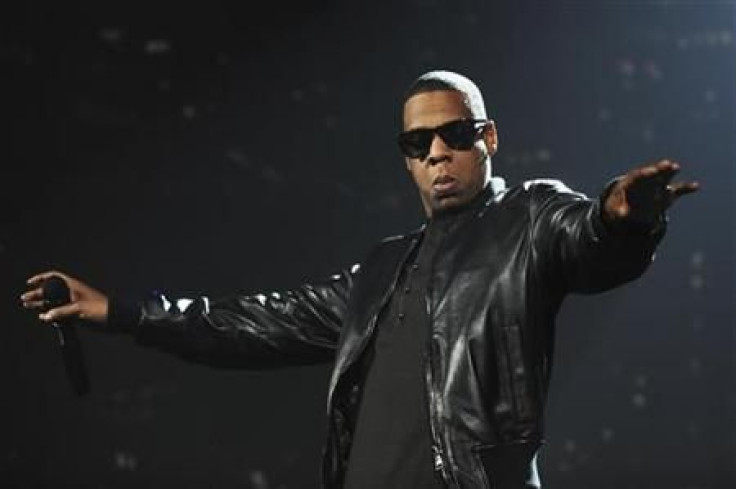Has Jay Z Alienated His Hip-Hop Base By Teaming Up With Barneys?

Luxury department store chain Barneys New York recently released rap superstar Jay Z’s 2013 holiday wear, a lavish collection of overpriced fashion items that is clearly designed for the wealthier demographics among the fashion-conscious. The collection also has received a slew of negative press thanks to allegations of racism made against the store.
The Jay Z line is also drawing criticism for the insanely high prices slapped onto the “street”-inspired wear. Some examples from the collection include a Moncler Leather Puffer jacket priced at $2,000, a leather Brooklyn Nets hat fitted for $875, and an epaulette T-shirt for $995. In one aspect, the prices of these pieces should not surprise anyone, considering Barneys’ famously upscale reputation. On the other hand, Barneys does not necessarily cater to the “street wear-conscious” hip-hop fan, and the prices of these articles alienate the people that would normally buy these clothes.
Hip-hop music has always been known for its “cool factor” among young consumers. This “cool factor” represented by today’s rappers is glamorized through ostentatious fashion, hypersexualized representations of women, and the constant references to big-name brands. Moreover, the “cool factor” of hip-hop, arguably defined as “swag” (an outdated and overused word), has influenced culture in a variety of ways. Whether it is Moscato wine garnering a younger audience through a Drake song, Ciroc vodka being mentioned in almost every rap song by artists affiliated with Diddy, or Air Jordans still seen on every rapper, hip-hop can be a major influence in the marketing world and help drive sales.
However, as with any brand or product, there needs to be a clear understanding of who the target audience is and how to deliver an effective message that can drive such sales.
Jay Z has made countless references to brand names throughout his career. Whether they are used as metaphors to reinforce the puns in his lyrics (such as Been Trill or Coca Cola) or to make literal references to the brands that he can afford (such as Chanel or the Trump Plaza), Jay Z's lyrics provide an extensive database of brand associations. His references have resonated so well with his audiences that they helped drive brand awareness and sales. This trend is even more noticeable for Jay Z’s own brands. Indeed, Roc-A-Wear, Jay Z’s first clothing label that started in the 1990s, has generated annual average sales of over $700 million. Jay’s S. Carter collection, the tennis shoes that bore Jay’s "government name," was the fastest-selling Reebok shoe when it debuted in 2003.
The huge sales of Roc-A-Wear and the S. Carter shoes in the early 2000s were generated for a variety of reasons. First, the clothing line and shoes were affordable. The S. Carters were priced at $95 for a pair and Roc-A-Wear pieces were usually in the range of $30-$200. The products were reasonably and realistically priced for the young hip-hop fans that make up the bulk of Jay’s fan base. Secondly, the companies selling these products have always maintained a positive relationship with the urban, hip-hop influenced demographic.
Unlike Barney’s Madison Avenue, Reebok and Roc-A-Wear made sure to understand the culture of hip-hop and its demographics. Whether it was a Reebok commercial with Jadakiss or artists from Roc-A-Fella records wearing the label’s clothing line, fans believed in the product, where it came from and what is was representing.
Lastly, and most importantly, the Roc-A-Wear clothing line and Reebok sneakers were created for the right target demographic. Jay Z stated that the S. Carter is “not an athletic shoe” but rather for the “cool kid who can’t jump on the sideline.” Also, Roc-A-Wear was created for the “street-savvy consumer” and the “core urban customer.” Both of these descriptions relates to what the urban customer resonates with: style that was inspired from the street life, where most people don’t wear luxury brands such as Barneys. Going back again to the cool factor of hip-hop influence, these two brands were able to reach the masses beyond the core urban consumer, but never alienated the base that was originally in mind.
Will The Barney’s collection be as iconic and successful as Roc-A-Wear and S. Carter? Most likely not. The allegations of racism that Barneys dealt with don’t help matters, but the biggest reasons this collection does not work is because it alienates the core consumer base that Jay Z has maintained for decades. Expensive prices, and Barney’s tainted and irrelevant luxurious image show a lack of understanding of the typical street-wear demographic.
Rather than spend over $1000 dollars on one piece, the urban core consumer will most likely seek out fashion from brands that maintain the authenticity of what street wear really is. Most of the time, that involves buying clothes that are affordable and sold by a company that understands and respects the culture of the intended demographic. Even with Jay’s association, Barneys does not deliver the authentic street culture that Jay Z’s other related brands did. The Barneys collection will only resonate with a very small pool of people, and the influence will not have the “cool factor” that past hip-hop, street influenced brands impressively delivered.
Tan Ahmed is a Connecticut-based writer, media blogger and analyst. His twitter handle too. @tann_time
© Copyright IBTimes 2024. All rights reserved.











